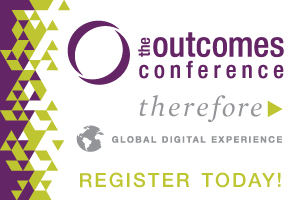
Developing Strategic Donor Campaigns by Douglas Shaw
In developing strategic donor campaigns, we need biblical stewardship principles to navigate this new world. The overarching principle is that we are, for a fact, using every channel available to us, in the most effective way. And just as every channel is unique, so is every ministry.
Because we are driven by a desire for excellence in the name of the Master, we don’t have the luxury of guessing or assuming. We simply have to know what channel should be used for what purpose.
Here are six steps to help you achieve success in developing a strategic, integrated, and multi-channel campaign:
Step 1: Rid yourself of any form of ego, assumption or theory.
That’s right. In communications and fundraising, we are usually the single largest impediment to our own success. You will have a much greater opportunity for success if you disallow yourself both thoughts and words that may trump reality (statements like: “I think,” “I want,” “I know” and “I believe”).
Step 2: Identify and document the single most important outcome.
For most ministries it will be something like: “We need to raise $500,000 to fund this unprecedented opportunity facing our ministry in order to (fill in the blank).
Other non-fundraising outcomes may involve:
- Growth of your ministry
- Engagement of your constituents
- Awareness of your ministry or the issues you seek to address
While we may think that giving people a choice of actions is good, it actually deters action. Harsh reality says that you can have one outcome!
Step 3: Identify all of the channels available to your ministry.
- Not every channel in existence will be available or affordable to you. So identify and list which channels are indeed available, such as:
Face-to-face cultivation of individual major donors - Foundation proposals
- Church interest and support
- Corporate interest and support
- Special events
- Planned giving
- Direct mail
- Mobile
- Social media
- Broadcast media
- Website
- Publicity
- Electronic media
- Print advertising (magazines, newsletters, newspapers — you get the idea)
- Outdoor advertising (billboards, cab backs, bus cards, etc.)
Step 4: Develop a strategy to accomplish your stated outcome.
This is perhaps the most difficult step. For the less experienced, strategy is often confused with tactics. But strategy is reality-based thinking that asks the question, “Why will people respond to my stated outcome?” Tactics ask the question, “What proven channels will enable people to best respond to my strategy?”
Strategy isn’t answering the “what” or “how” of a campaign; it’s answering the “why.” Why will people respond to your campaign? Sending out an email or producing a direct mail piece isn’t a strategy, its simply a tactic. And tactics only work well within the context of a sound strategy.
Developing a sound strategy is where most integrated, multi-channel campaigns succeed or fail. Every good strategy involves a strong offer. All of the advertisers for the consumer products know the value of a strong offer. For our purposes, the word “offer” has a very specific meaning.
Here, an offer means we are answering five critical questions that apply to all channels used:
- What opportunity or problem is my ministry trying to seize or solve? (This is your outcome.)
- What will it cost to seize this opportunity or solve the problem?
- What is my ministry doing to seize or solve?
- How will the donor’s gift seize or solve?
- Why should the donor give now?
Step 5: Match your available channels to your strategy.
All of these channels, when fully integrated in their offer, message, style and look, will contribute to achieving your outcome. But a brief word of experience: not all channels will perform at the same level.
While every channel contributes to the whole, regardless of how the donor responds, one or more of the channels will have a dominant role in receiving the revenue. The high-performing channels in this campaign will be major donors and direct mail.
Step 6: Fully integrate this campaign within your whole ministry.
You not only want to integrate the elements of this specific campaign, you also want to integrate this campaign with all other communications and fundraising activities that are scheduled to occur within your ministry. Developing and using a ministry-wide communications and fundraising calendar can accomplish full integration. This will assist you in coordinating your campaign without jeopardizing other critical initiatives.
Finally, measure how each of your channels and tactics performed. Every campaign is an opportunity to learn more and understand better how your donor base performs. Following these steps should help as you seek to use all that the Master has entrusted to you, to maximize the return and hear the encouraging words,
“Well done, good and faithful servant.” ~ Matt. 25:23a
####
Douglas K. Shaw co-founded Douglas Shaw & Associates, Inc. to serve organizations through a Donor-Focused Strategic Marketing® approach to communication and fundraising. He is the author of the book, The Rules of Fundraising (CreateSpace, 2012). Today’s post is an excerpt from the 2015 Winter edition of Outcomes Magazine.

Be sure to register for the Outcomes Conference for 2018 today!

What is Christian Leadership Alliance?
Christian Leadership Alliance equips and unites leaders to transform the world for Christ. We are the leaders of Christ-centered organizations who are dedicated to faithful stewardship for greater kingdom impact.
Sign up for FREE blog updates.
Upcoming Events
Check back later!



